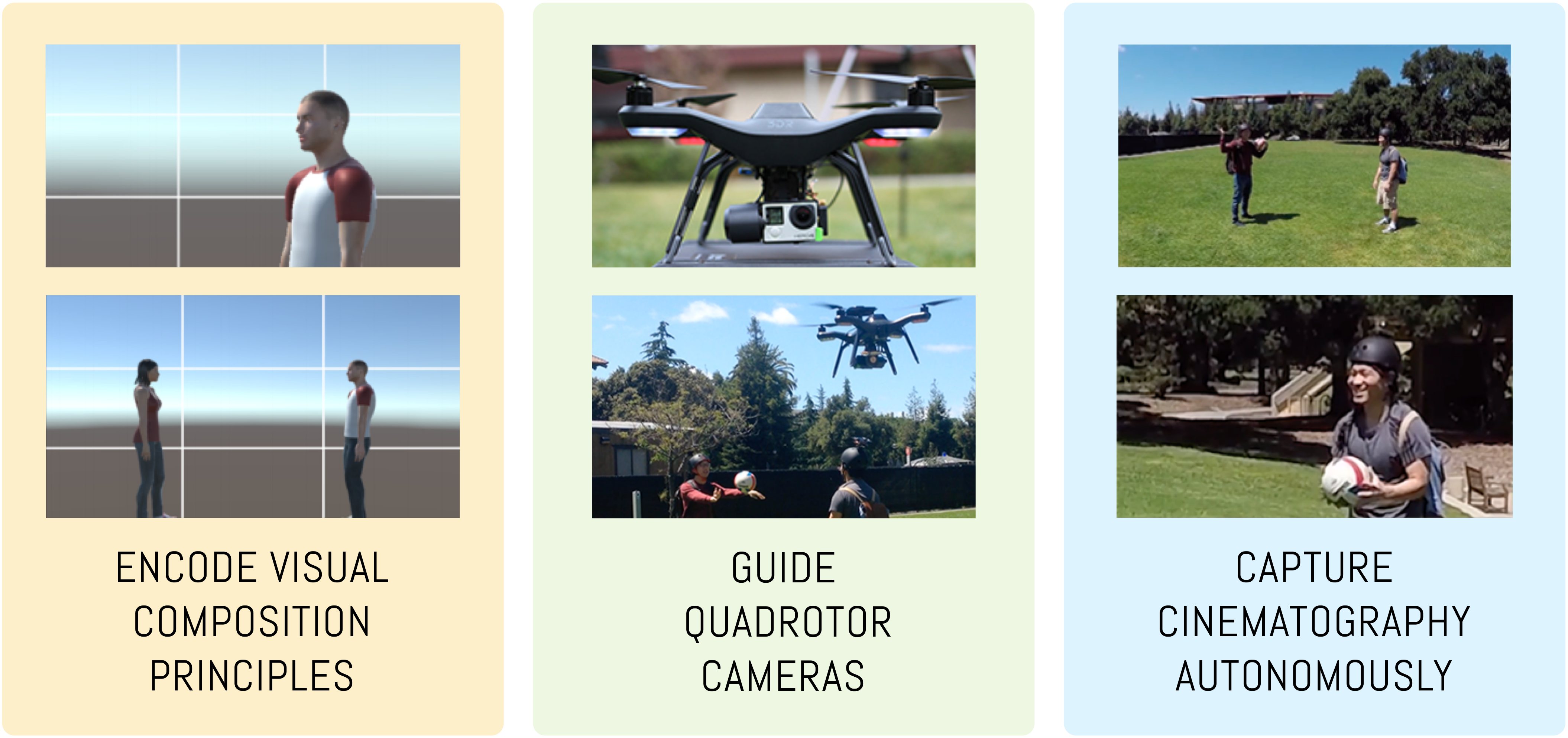Abstract
We present a system to capture video footage of human subjects in the real world. Our system leverages a quadrotor camera to automatically capture well-composed video of two subjects. Subjects are tracked in a large-scale outdoor environment using RTK GPS and IMU sensors. Then, given the tracked state of our subjects, our system automatically computes static shots based on well-established visual composition principles and canonical shots from cinematography literature. To transition between these static shots, we calculate feasible, safe, and visually pleasing transitions using a novel real-time trajectory planning algorithm. We evaluate the performance of our tracking system, and experimentally show that RTK GPS significantly outperforms conventional GPS in capturing a variety of canonical shots. Lastly, we demonstrate our system guiding a consumer quadrotor camera autonomously capturing footage of two subjects in a variety of use cases. This is the first end-to-end system that enables people to leverage the mobility of quadrotors, as well as the knowledge of expert filmmakers, to autonomously capture high-quality footage of people in the real world.
